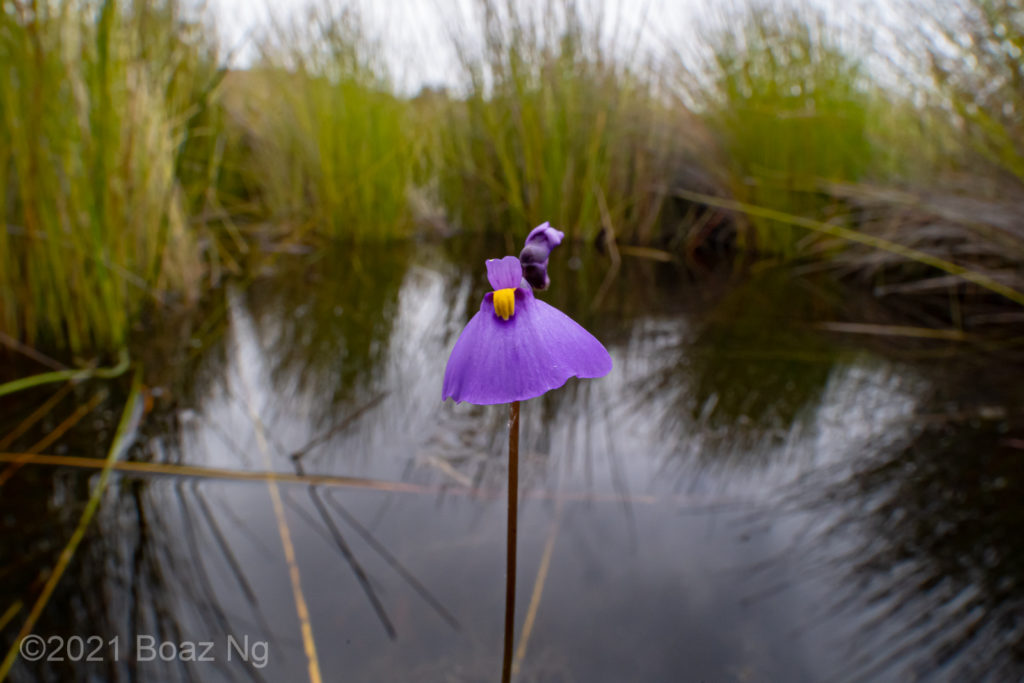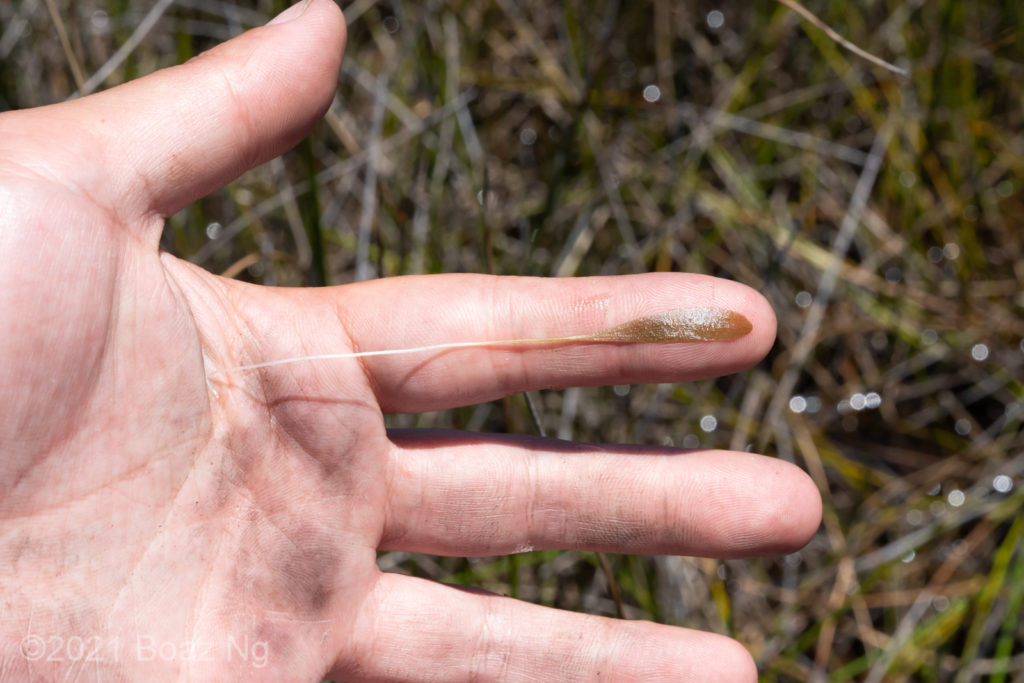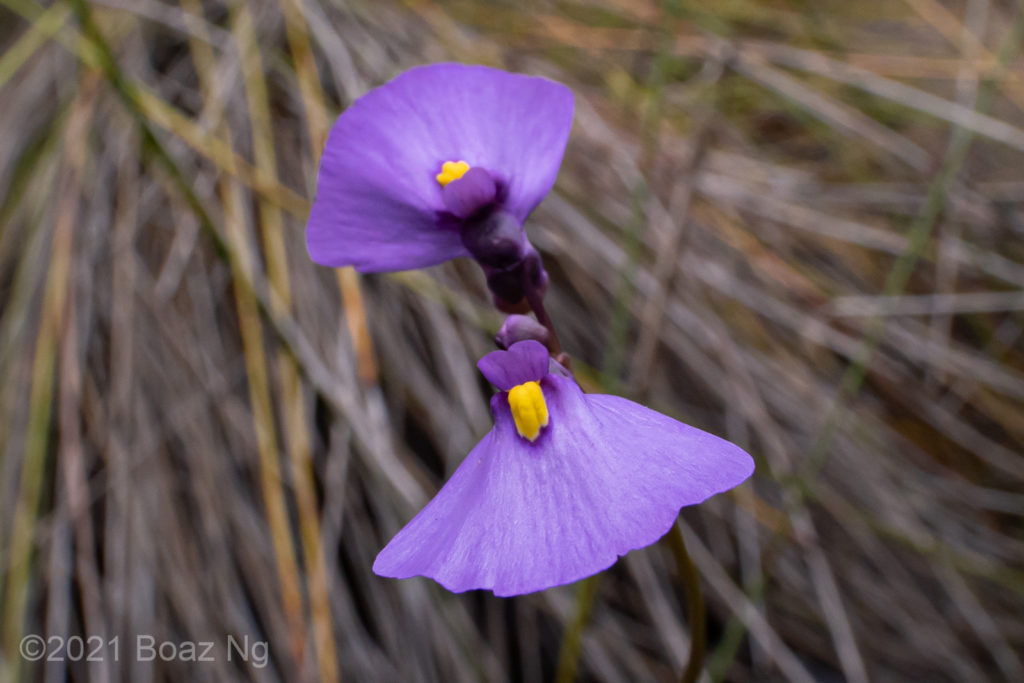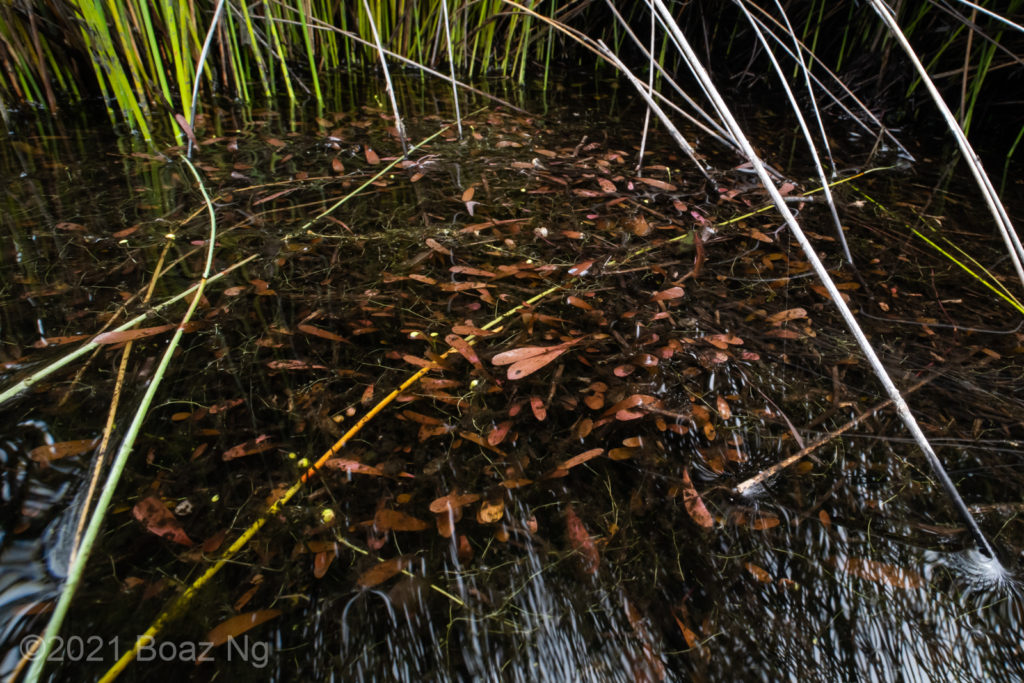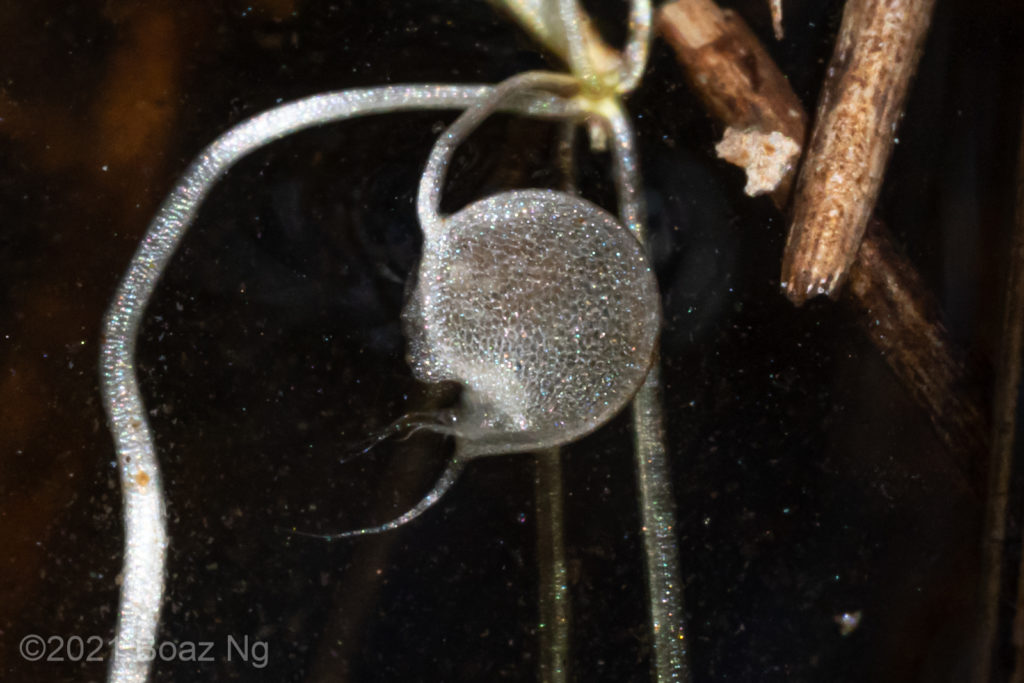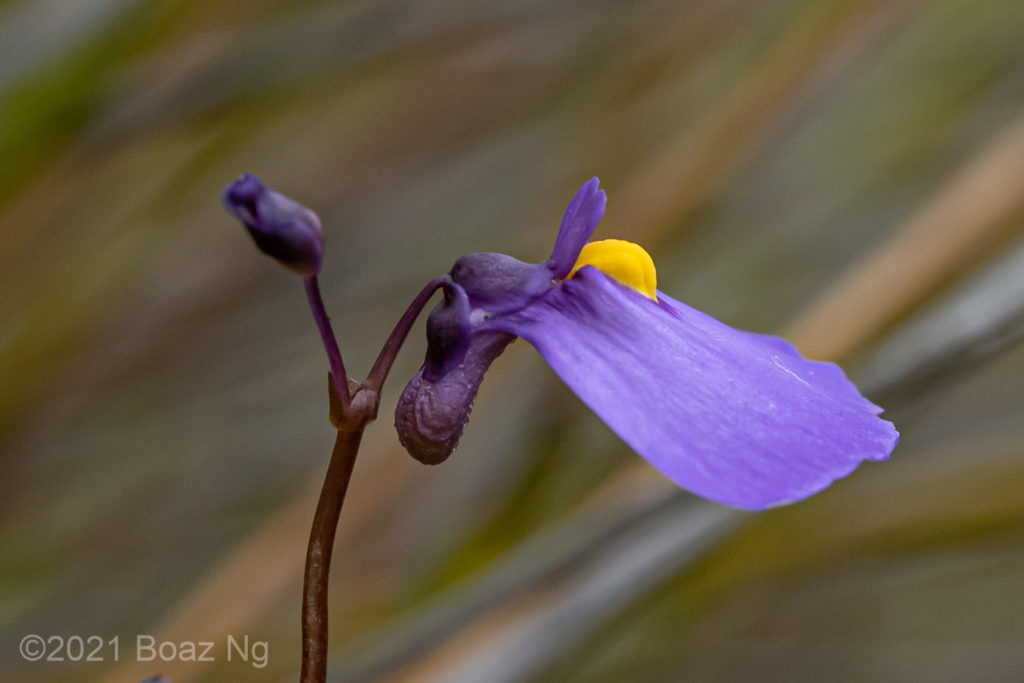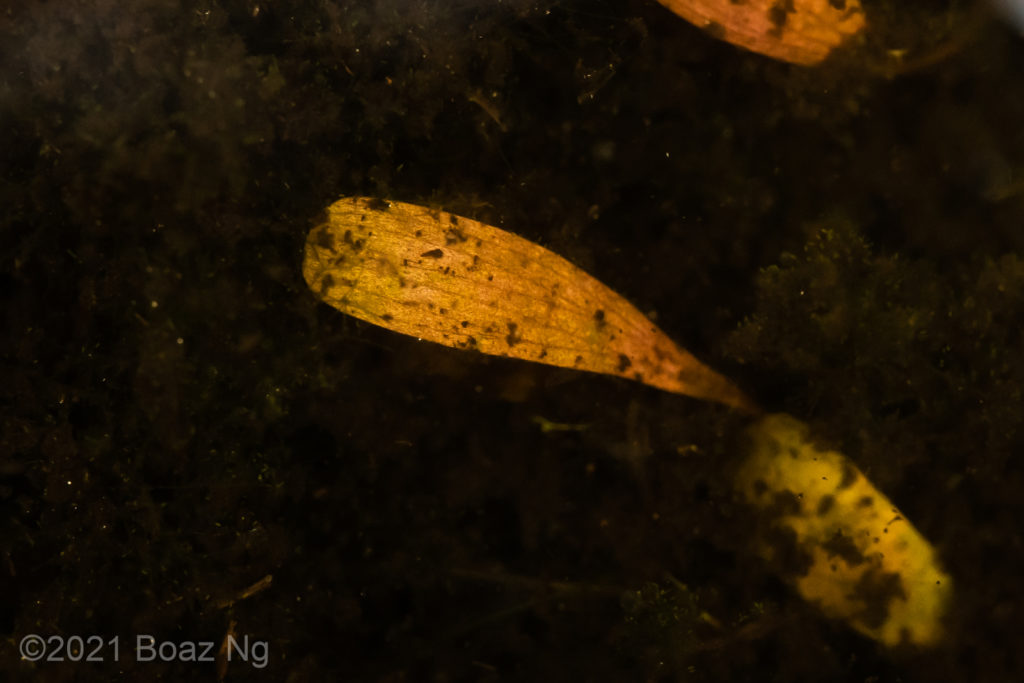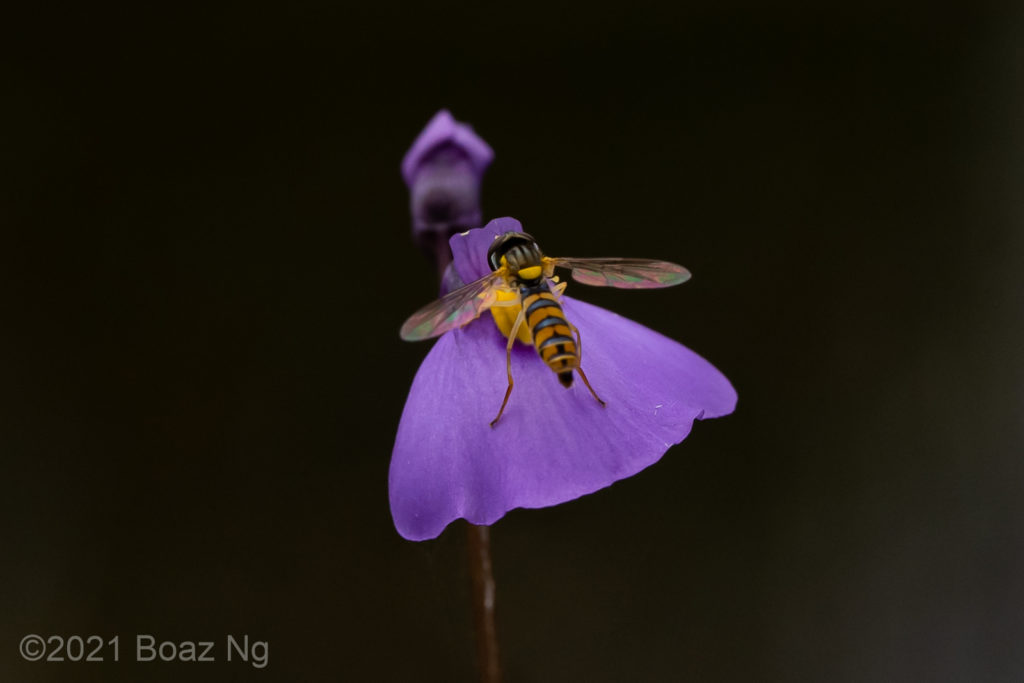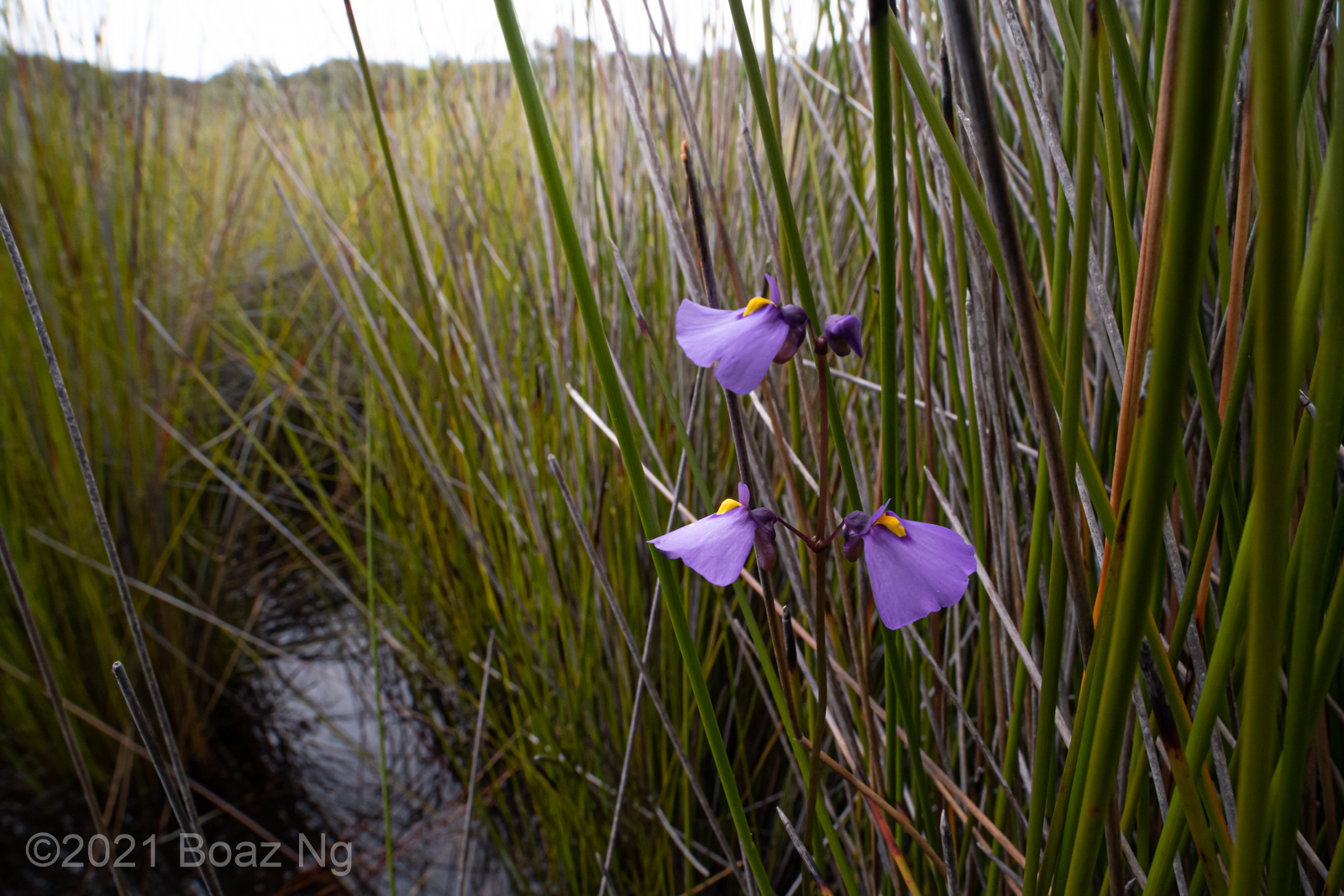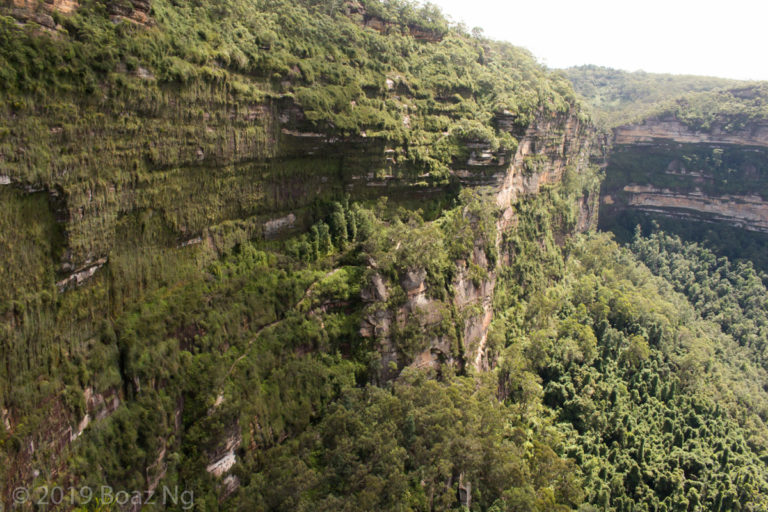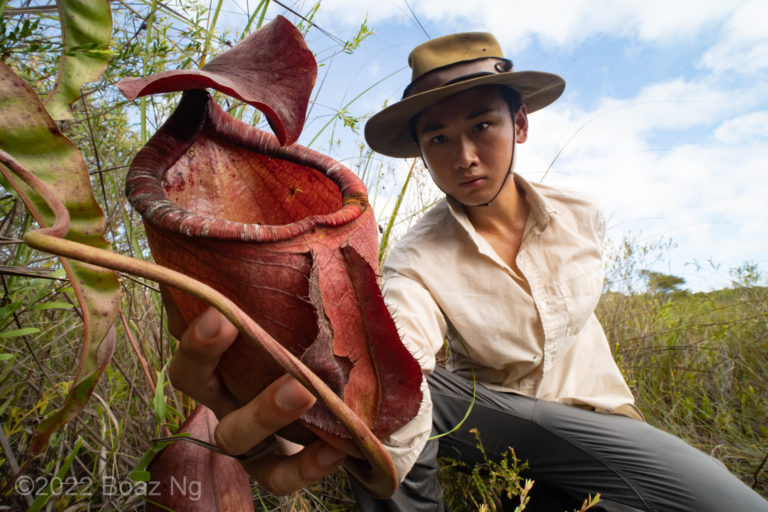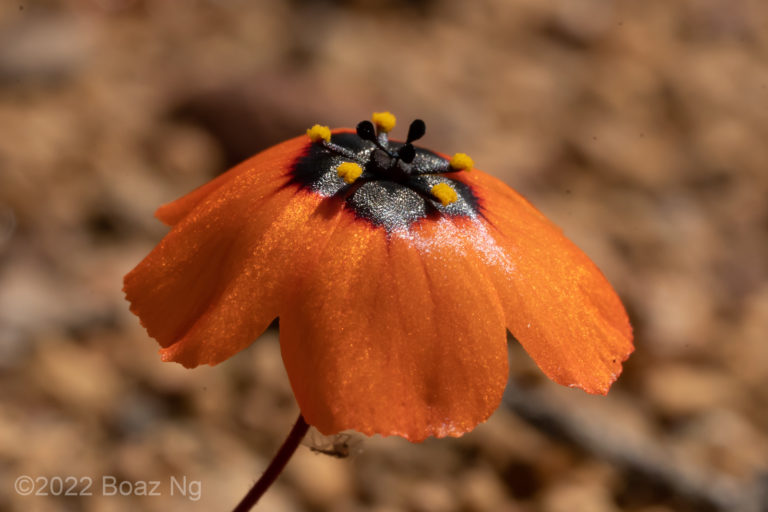Utricularia speciosa is a vulnerable bladderwort endemic to four sites on the east coast of Australia. The species was recently resurrected from synonymy with U. dichotoma by Jobson & Baleeiro in 2020.
U. speciosa has large, multiveined leaves, which can reach over 10 cm in length. These leaves are bronze in good light and green in shade. The flowers are purple with dark yellow palate ridges at the centre. The lower corolla lip forms a flared skirt, sometimes with shallow lobes at the edge. The upper corolla lip is deeply notched at the top and features light veins. The corolla spur is broad and shorter than the lower corolla lip. The bracts are basifixed and non-gibbous at the base. The flowers are borne on long stems up to 40 cm tall.
The species is adapted to growing in deepwater habitats. Its large leaves permit photosynthesis in the tannin-stained and sedge-shaded waters. The long peduncles elevate the blooms above the waterline.
U. speciosa is restricted to four known populations on the central and mid-north coast of NSW. It inhabits large, permanent freshwater swamps in coastal heathland which are naturally rare or destroyed by urbanisation. The species grows amongst sedges in water up to 50 cm deep.
As a member of the Utricularia dichotoma complex, the species is superficially similar to most of the purple-flowered bladderworts of Eastern Australia. It is most readily distinguished by its large, multiveined leaves (the rest of the complex has smaller or scale-like leaves).
